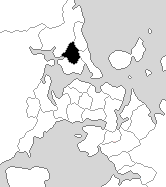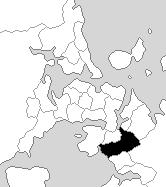
The Battle of Monte Cassino, also known as the Battle for Rome, was a series of four military assaults by the Allies against German forces in Italy during the Italian Campaign of World War II. The objective was to break through the Winter Line and facilitate an advance towards Rome.

The Australian 4th Division was formed in the First World War during the expansion of the Australian Imperial Force (AIF) infantry brigades in February 1916. In addition to the experienced 4th Brigade were added the new 12th and 13th Brigades. From Egypt the division was sent to France, where it took part in the fighting on the Western Front during 1916–1918. After the war ended, the AIF was demobilised and the division was dissolved.

The 2nd New Zealand Division, initially the New Zealand Division, was an infantry division of the New Zealand Military Forces during the Second World War. The division was commanded for most of its existence by Lieutenant-General Bernard C. Freyberg. It fought in Greece, Crete, the Western Desert and Italy. In the Western Desert Campaign, the division played a prominent role in the defeat of German and Italian forces in the Second Battle of El Alamein and the British Eighth Army's advance to Tunisia.

The I ANZAC Corps was a combined Australian and New Zealand army corps that served during World War I.
In United States labor law, at-will employment is an employer's ability to dismiss an employee for any reason, and without warning, as long as the reason is not illegal. When an employee is acknowledged as being hired "at will", courts deny the employee any claim for loss resulting from the dismissal. The rule is justified by its proponents on the basis that an employee may be similarly entitled to leave their job without reason or warning. The practice is seen as unjust by those who view the employment relationship as characterized by inequality of bargaining power.
The Moeraki Branch was one of the most short-lived railway lines in New Zealand. It left the Main South Line between Oamaru and Dunedin and served Port Moeraki between 1877 and 1879.

New Zealand Shipping Co. Ltd. v. A. M. Satterthwaite & Co. Ltd., or The Eurymedon is a leading case on contract law by the Judicial Committee of the Privy Council. This 1974 case establishes the conditions when a third party may seek the protection of an exclusion clause in a contract between two parties.
The law of New Zealand uses the English common law system, inherited from being a part of the British Empire.

Panmure is a former New Zealand parliamentary electorate in the southern suburbs of the city of Auckland, from 1984 to 1996. In the four parliamentary terms of its existence, it was first represented by Bob Tizard of the Labour Party, and then by his daughter Judith Tizard.

Glenfield was a New Zealand parliamentary electorate for four terms, from 1984 to 1996. It was represented by two members of parliament, first Judy Keall of the Labour Party, and then Peter Hilt of the National Party. Hilt defected to United New Zealand in 1995.

Otara was a New Zealand parliamentary electorate in Auckland, from 1984 to 1996. It existed for four parliamentary terms and was represented by three members of parliament, two from Labour and one from National.
Tongariro is a former New Zealand parliamentary electorate, from 1984 to 1996. During the four parliamentary terms of its existence, it was represented by three members of parliament.
West Auckland is a former New Zealand parliamentary electorate on the western outskirts of Auckland, created for the 1984 election from part of the former Helensville electorate. The electorate was abolished for the 1993 election, and split between Henderson and Waitakere electorates.

Forestry in New Zealand has a history starting with European settlement in the 19th century and is now an industry worth seven percent of annual revenue. Much of the original native forest cover was burnt off and logged, however forests have been extensively planted, predominantly with fast-growing cultivars of the Monterey Pine. Wood chips, whole logs, lumber and paper products are exported from New Zealand.

Women have been a vital part of history and culture in the geographic area known as Oceania today. Women in Oceania have diverse cultural identities which relate to the geography of the continent and the social structures of the people living there. Their evolution, culture and history coincide with the history of Oceania itself.

Attorney-General v Barker Bros Ltd [1976] 2 NZLR 495 is a cited New Zealand case regarding the legal concept of certainty regarding contract formation. It reinforces in NZ case law the English case of G Scammell & Nephew Ltd v Ouston [1941] AC 251.

Money v Ven-Lu-Ree Ltd [1988] 2 NZLR 414, aff'd [1989] 3 NZLR 129 is a cited case in New Zealand regarding the issue of certainty in contract formation.

Compcorp Ltd v Force Entertainment Ltd (2003) 7 NZBLC 103,996 is a cited case in New Zealand regarding terms implied by the Courts to give "business efficacy" to a contract that would have otherwise been unworkable. It effectively upholds the English case of The Moorcock into New Zealand law.

Jenkins v NZI Finance Ltd (1991) 3 NZBLC 102,198 is a cited case in New Zealand regarding that the common law remedy of non est factum for a contract is not available simply because a party was careless in signing a contract without first properly reading it.

Whelan v Waitaki Meats Ltd (1990) ERNZ Sel Co 960; [1991] 2 NZLR 74 is a cited case in New Zealand distinguishing that Addis v Gramophone Co Ltd prohibition of the awarding of damages for distress only applies to commercial contracts, and not to employment contracts.










